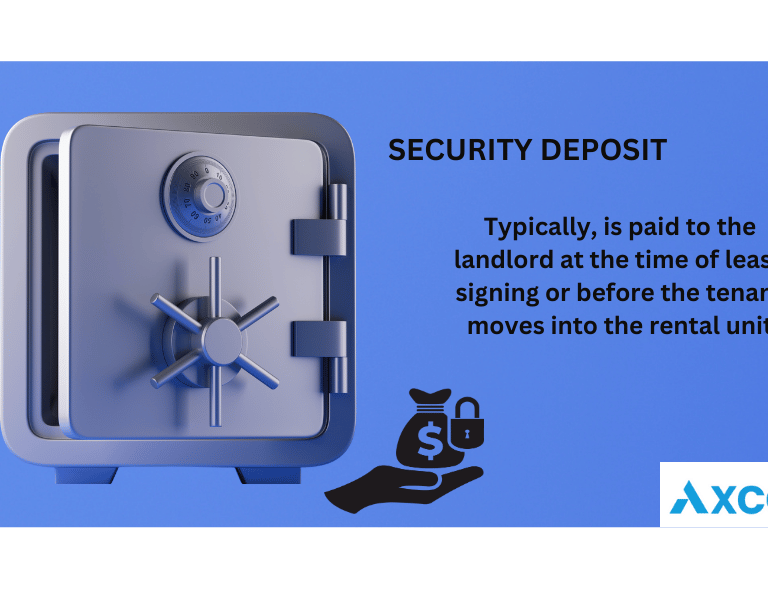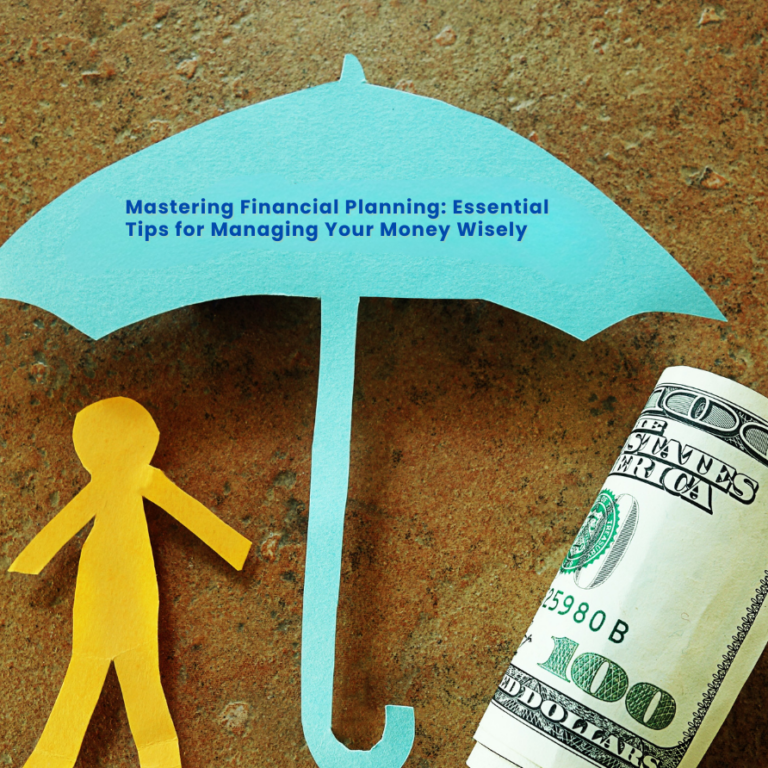Financial Risk Management: Protecting Your Wealth & Investments
Is Financial Risk a Threat or an Opportunity?
Financial risk refers to the uncertainty of potential financial loss. It is the possibility that an investment may not perform as expected or that unforeseen expenses may arise. While this uncertainty can lead to setbacks, ranging from minor disruptions to major financial crises, it also presents opportunities. Those who understand and manage financial risk effectively can turn uncertainty into strategic advantages, leveraging market fluctuations and calculated risks to maximize returns. The key lies in risk assessment, mitigation strategies, and informed decision-making.
Why Risk Management Matters for Everyone
Risk management is not just for investors and businesses; it’s a vital skill for everyone. By understanding and managing financial risks. Risk management is not just for businesses and investors—it’s essential for everyone. Whether managing personal finances, running a company, or making investment decisions, understanding and mitigating risks can protect against unexpected losses.
Protect Your Wealth
Safeguard your hard-earned money from unexpected losses.
Achieve Financial Goals
Stay on track towards your long-term goals, such as buying a home, saving for retirement, or starting a business.
Reduce Stress
Minimize the emotional toll of financial uncertainty.
Make Informed Decisions
Evaluate the potential risks and rewards of financial decisions.
Common Financial Risks People Face Daily
Financial risks are not just concerns for businesses and investors—they affect everyday life. Here are some common financial risks people encounter daily:
- Market Risk: This risk arises from fluctuations in the stock market, bond market, or other investments. A sudden market downturn can erode the value of your portfolio. For example, if you invest in stocks, a decline in the stock market could lead to significant losses.
- Credit Risk: This occurs when you borrow money, such as through a credit card or loan. If you default on these payments, it can damage your credit score, leading to higher interest rates on future loans and difficulty obtaining credit.
- Liquidity Risk: This risk arises when you cannot easily convert your assets into cash. For example, if you invest in illiquid assets like real estate, it may be difficult to sell them quickly to meet financial needs, such as paying for an emergency expense.
- Operational Risk: This risk stems from errors, failures, or fraud within financial institutions. For instance, a bank error or a cyberattack could lead to financial losses.
- Foreign Exchange Risk: This risk arises from fluctuations in exchange rates. If you have investments or debts denominated in foreign currencies, changes in exchange rates can impact your overall financial position.
Types of Financial Risks
Market Risk: Navigating the Volatile Waters
Market risk, also known as systematic risk, arises from fluctuations in the overall market. This can be caused by various factors, such as economic indicators, geopolitical events, and changes in investor sentiment.
To mitigate market risk, consider these strategies:
Credit Risk: The Perils of Borrowing
Credit risk arises when you borrow money, such as through a credit card or loan. If you default on these payments, it can damage your credit score, leading to higher interest rates, difficulty obtaining credit, and potential legal action.
To manage credit risk:
- Maintain a Good Credit Score: Pay your bills on time, avoid excessive debt, and monitor your credit report regularly.
- Shop Around for the Best Interest Rates: Compare offers from different lenders to find the most favorable terms.
- Create a Realistic Budget: Stick to your budget to avoid overspending and excessive debt.
- Consider a Debt Consolidation Loan: If you have multiple high-interest debts, consolidating them into a single loan with a lower interest rate can help you pay off your debt faster.
Inflation Risk: The Silent Thief of Purchasing Power
Inflation risk arises from the erosion of purchasing power due to rising prices. Over time, inflation can diminish the value of your savings and investments.
To combat inflation risk:
- Invest in Inflation-Protected Securities: Consider investments like Treasury Inflation-Protected Securities (TIPS) that adjust their value to account for inflation.
- Invest in Real Estate: Real estate can be a hedge against inflation, as property values often increase over time.
- Adjust Your Investment Strategy: Rebalance your portfolio to include assets that are likely to appreciate faster than inflation.
- Consider High-Quality Assets: Invest in assets with strong fundamentals and growth potential, such as stocks of established companies.
Liquidity Risk: The Challenge of Accessing Cash
Liquidity risk arises when you cannot easily convert your assets into cash. For instance, if you invest in illiquid assets like real estate, it may be difficult to sell them quickly to meet financial needs.
To manage liquidity risk:
- Maintain an Emergency Fund: Set aside a portion of your income for unexpected expenses.
- Diversify Your Investments: Include a mix of liquid and illiquid assets in your portfolio.
- Plan for Future Needs: Consider your long-term financial goals and ensure you have sufficient liquidity to meet them.
- Avoid Excessive Leverage: Avoid borrowing too much money, as this can increase your liquidity risk.
Identifying Personal Financial Risks
To effectively manage financial risks, it’s essential to identify the specific risks that may impact your personal financial situation. Here are some key areas to consider:
Assessing Income Stability and Job Security
Income stability and job security are crucial for financial well-being, as they determine your ability to meet expenses, save for the future, and navigate economic uncertainties. Evaluating these factors helps in making informed financial decisions and preparing for potential risks.
Job Security: Evaluate the stability of your current employment. Consider factors like your industry’s economic outlook, your company’s financial health, and your role within the organization.
Income Volatility: Assess the variability of your income. If you have a freelance or commission-based job, your income may fluctuate.
Emergency Fund: Build an emergency fund to cover unexpected expenses, such as job loss or medical emergencies. Aim for 3-6 months’ worth of living expenses.
Evaluating Personal Debt and Loan Obligations
Managing debt effectively is key to financial stability. Evaluating your debt levels and repayment strategies helps prevent financial stress and ensures long-term financial health.
Debt-to-Income Ratio: Calculate your debt-to-income ratio to assess your debt burden. A higher ratio indicates a higher risk of financial stress.
High-Interest Debt: Prioritize paying off high-interest debt, such as credit card debt.
Student Loan Debt: Develop a repayment plan for your student loans, considering options like income-driven repayment plans or loan forgiveness programs.
Recognizing Healthcare and Emergency Expense Risks
Healthcare and unexpected emergency expenses can pose significant financial risks. Being prepared can help mitigate these risks and protect your financial security in times of need.
Health Insurance Coverage: Ensure you have adequate health insurance coverage to protect yourself from high medical costs.
Emergency Fund: As mentioned earlier, an emergency fund can help cover unexpected medical expenses or other emergencies.
Disability Insurance: Consider disability insurance to protect your income in case of a disabling illness or injury.
Additional Considerations
Lifestyle Risks: Evaluate your lifestyle choices, such as excessive spending or risky behaviors, that could impact your financial well-being.
Family and Caregiving Responsibilities: Consider the financial implications of caring for family members or dependents.
Retirement Planning: Assess your retirement savings and investment strategies to ensure you are on track to meet your retirement goals.
By identifying these personal financial risks, you can take proactive steps to mitigate them and build a stronger financial future.
Helpful Resources:
Consumer Financial Protection Bureau (CFPB): A government agency that provides information and resources to help consumers make informed financial decisions.
National Foundation for Credit Counseling (NFCC): A nonprofit organization that offers credit counseling and financial education services.
Financial Planning Association (FPA): A professional organization of certified financial planners.
Importance of an Emergency Fund
Building a Safety Net for Unexpected Costs An emergency fund is a crucial component of a sound financial plan. It acts as a safety net, providing a financial cushion to protect you from unexpected expenses. These expenses can range from minor car repairs to major medical bills or job loss.
How Much to Save and Where to Keep It The ideal amount to save for an emergency fund is typically three to six months’ worth of living expenses. This amount can vary depending on your individual circumstances, such as job stability, health conditions, and family obligations.
When choosing where to keep your emergency fund, prioritize accessibility and liquidity. High-yield savings accounts or money market accounts are excellent options as they offer competitive interest rates and easy access to your funds. Avoid investing your emergency fund in stocks or other volatile assets that may fluctuate in value.
Emergency Funds as the First Line of Risk Defense An emergency fund serves as the first line of defense against financial risks. By having readily available cash, you can avoid resorting to high-interest debt, such as credit cards, to cover unexpected expenses. This can save you significant money in interest charges and help you maintain your financial stability.
Additional Tips for Building an Emergency Fund
- Start Small: Begin with a modest amount and gradually increase your savings over time.
- Automate Your Savings: Set up automatic transfers from your checking account to your savings account to make saving effortless.
- Review Your Budget: Identify areas where you can cut back on expenses to free up more money for your emergency fund.
- Avoid Touching Your Emergency Fund: Resist the temptation to dip into your emergency fund for non-emergency expenses.
By prioritizing the creation of an emergency fund, you can significantly reduce your financial vulnerability and enhance your overall financial well-being.
For more in-depth information, consider consulting with a financial advisor or exploring resources from reputable financial institutions like:
- Bankrate: Offers a variety of financial advice and tools, including information on emergency funds.
- NerdWallet: Provides personal finance advice and tools, including articles on building an emergency fund.
- Investopedia: A comprehensive financial education resource with articles on various financial topics, including emergency funds.

Basics of Insurance for Risk Management
Insurance is a financial tool that transfers the risk of financial loss from an individual or entity to an insurer. By paying regular premiums, the insured party is protected against potential financial losses caused by unforeseen events.
Types of Insurance for Personal Financial Security
Insurance plays a crucial role in safeguarding your financial security by providing protection against unexpected risks. Here are some of the most common types of insurance:
Health Insurance
Covers: Medical expenses, including doctor visits, hospital stays, surgeries, and prescription drugs.
Importance: Protects against significant medical costs, especially in case of accidents or chronic illnesses.
Reference: HealthCare.gov
Auto Insurance
Covers: Property damage, bodily injury, and liability claims resulting from car accidents.
Importance: Protects your assets and financial well-being in case of an accident.
Reference: Insurance Information Institute
Homeowners Insurance
Covers: Damage to your home and personal belongings caused by fire, theft, natural disasters, or other perils.
Importance: Protects your home and possessions from significant financial loss.
Reference: Insurance Information Institute
Renters Insurance
Covers: Your personal belongings in a rented property, including furniture, electronics, and clothing.
Importance: Protects your valuable possessions from loss or damage.
Reference: Insurance Information Institute
Life Insurance
Covers: Provides a death benefit to beneficiaries, helping them financially after your passing.
Importance: Ensures financial security for loved ones, especially if they rely on your income.
Reference: Life Happens
How Insurance Helps Manage Financial Loss
Insurance serves as a critical tool in managing and mitigating financial risks, providing individuals and families with a safety net in times of uncertainty. Here’s how it helps:
- Risk Transfer: Shifting the risk of financial loss to the insurance company.
- Loss Mitigation: Providing financial compensation to cover losses, helping you recover from setbacks.
- Peace of Mind: Knowing that you are protected from potential financial catastrophes.
Tips for Choosing the Right Coverage
Selecting the right insurance coverage is essential for ensuring financial security. Here are key tips to help you make informed decisions:
- Assess Your Needs: Identify your specific needs and risk tolerance.
- Shop Around: Compare quotes from different insurance providers to find the best rates and coverage.
- Understand Your Policy: Read your policy carefully to understand the coverage limits, deductibles, and exclusions.
- Consider Additional Coverage: Explore options like umbrella insurance or flood insurance for enhanced protection.
- Review Your Coverage Regularly: Update your coverage as your life and needs change.
Diversification: Reducing Risk in Investments
What is Diversification and How it Works Diversification is a risk management strategy that involves spreading investments across various asset classes, industries, and geographic regions. By diversifying your portfolio, you reduce the impact of negative performance in any one investment on your overall returns.
Benefits of Spreading Investments Across Assets
Spreading your investments across various asset classes, known as diversification, is one of the most effective strategies for managing risk and enhancing long-term returns. Here are the key benefits:
- Risk Reduction: Diversification helps spread risk across different investments, reducing the overall volatility of your portfolio.
- Enhanced Returns: By investing in a variety of assets, you can potentially increase your overall returns.
- Reduced Stress: A diversified portfolio can provide peace of mind, knowing that your investments are not overly concentrated in any one area.
Simple Ways to Diversify Without Complex Strategies
Diversification doesn’t need to be complicated. Here are some straightforward ways to spread your investments and reduce risk:
- Index Funds: These funds track a specific market index, such as the S&P 500, providing broad market exposure.
- Exchange-Traded Funds (ETFs): ETFs offer a diverse range of investment options, including stocks, bonds, and commodities.
- Mutual Funds: These funds pool money from investors to invest in a diversified portfolio of stocks, bonds, or other assets.
- Target-Date Funds: These funds automatically adjust their asset allocation over time to align with your retirement goals.
For more information on diversification and investment strategies, consider consulting with a financial advisor or exploring resources from reputable financial institutions like:
- Investopedia: A comprehensive financial education resource with articles on various investment topics.
- Bankrate: Provides financial advice and tools, including information on investing and portfolio diversification.
- NerdWallet: Offers personal finance advice and tools, including articles on investing basics and diversification strategies.
Managing Debt to Lower Financial Risk
Effectively managing debt is key to reducing financial risk and maintaining a stable financial future. Here are some strategies to help you control debt and minimize its impact on your financial security:
Understanding Good Debt vs. Bad Debt
Not all debt is created equal. It’s essential to distinguish between good debt and bad debt.
- Good Debt: This type of debt can lead to long-term financial benefits. Examples include student loans for education or a mortgage for a home.
- Bad Debt: This type of debt can hinder your financial progress and lead to financial stress. Examples include credit card debt, payday loans, and car loans for luxury vehicles.
Practical Strategies to Pay Down Debt
Paying down debt requires discipline and planning, but with the right approach, you can reduce financial stress and regain control of your finances. Here are some practical strategies to help you pay off debt more effectively:
- Create a Budget: A budget helps you track your income and expenses, allowing you to allocate funds towards debt repayment.
- Prioritize High-Interest Debt: Focus on paying off debts with the highest interest rates first to minimize the total amount of interest paid.
- Debt Snowball Method: Pay off smaller debts first, gaining momentum and motivation as you eliminate each one.
- Debt Avalanche Method: Prioritize paying off debts with the highest interest rates first, saving money on interest charges.
- Consolidate Debt: Combine multiple debts into a single loan with a lower interest rate.
Using Debt Responsibly to Avoid Financial Trouble
When used wisely, debt can be a helpful tool for achieving financial goals, but it also carries the risk of financial trouble if mismanaged. Here are key principles to use debt responsibly and avoid falling into financial hardship:
- Borrow Wisely: Only borrow money for essential needs, such as education or a home purchase.
- Live Within Your Means: Avoid overspending and excessive borrowing.
- Pay Your Bills on Time: Timely payments can help improve your credit score.
- Monitor Your Credit Report: Regularly review your credit report for errors and take steps to correct them.
- Seek Professional Help: If you’re struggling with debt, consider consulting with a credit counselor or financial advisor.
For more detailed information and personalized advice, consider consulting with a financial advisor.
Helpful Resources:
- NerdWallet: Offers personal finance advice and tools, including articles on debt management and credit counseling.
- Investopedia: A comprehensive financial education resource with articles on various debt-related topics.
- National Foundation for Credit Counseling (NFCC): A non-profit organization that offers credit counseling and financial education services.
Financial Planning for Long-Term Security
Setting Financial Goals to Guide Your Risk Strategy A well-defined financial plan is the cornerstone of long-term financial security. Setting clear and achievable financial goals helps you make informed decisions about your risk tolerance and investment strategy.
- Short-Term Goals: These goals typically take less than a year to achieve, such as saving for a vacation or a major purchase.
- Medium-Term Goals: These goals may take one to five years to achieve, such as saving for a down payment on a house or a child’s education.
- Long-Term Goals: These goals, such as retirement, often require a long-term investment horizon.
Budgeting as a Tool for Managing Financial Risk A budget is a powerful tool for managing financial risk. By tracking your income and expenses, you can identify areas where you can cut back on spending and allocate more funds towards savings and investments.
- Create a Realistic Budget: Consider your income, expenses, and financial goals when creating your budget.
- Track Your Spending: Use budgeting apps or spreadsheets to monitor your spending habits.
- Review and Adjust Your Budget Regularly: As your financial situation changes, adjust your budget accordingly.
How Retirement Planning Reduces Future Risk
Retirement planning is a crucial aspect of long-term financial security. By saving and investing for retirement, you can reduce the risk of financial hardship in your later years.
- Define Your Retirement Goals: Determine how much you need to save and invest to achieve your desired lifestyle in retirement.
- Choose the Right Retirement Accounts: Consider options like 401(k)s, IRAs, and Roth IRAs.
- Diversify Your Investments: Spread your retirement savings across various asset classes to reduce risk.
- Consult with a Financial Advisor: A financial advisor can help you create a personalized retirement plan.
For more information and personalized advice, consider consulting with a financial advisor or exploring resources from reputable financial institutions like:
- Investopedia: A comprehensive financial education resource with articles on various financial planning topics.
- Bankrate: Provides financial advice and tools, including information on budgeting, saving, investing, and retirement planning.
- NerdWallet: Offers personal finance advice and tools, including articles on financial planning and retirement strategies.
Monitoring and Adjusting Your Risk Management Strategy
Effective risk management is an ongoing process that requires continuous monitoring and adjustments to ensure your strategy remains aligned with changing circumstances. Here’s how to keep your risk management plan on track:
Regularly Reviewing Your Financial Situation
Regularly reviewing your financial situation is a cornerstone of effective risk management. As your life circumstances change, so too should your financial plan.
- Annual Financial Check-up: Conduct an annual review of your income, expenses, investments, and insurance coverage. This will help you identify areas where you may need to make adjustments.
- Life Event Reviews: Significant life events, such as marriage, divorce, birth of a child, job changes, or retirement, can have a significant impact on your financial situation. Review your financial plan after each major life event to ensure it aligns with your new circumstances.
- Economic Monitoring: Stay informed about economic trends, interest rates, and market volatility. Economic conditions can influence your investment decisions and overall financial strategy.
Adjusting Insurance, Investments, and Savings Based on Life Changes
Life events, whether expected or unexpected, often require adjustments to your financial strategy. Here’s how to modify your insurance, investments, and savings to stay on track when your circumstances change:
Insurance:
a. Review Coverage: Regularly review your health, auto, home, and life insurance policies to ensure you have adequate coverage.
b. Adjust Coverage: As your needs change, adjust your coverage limits and deductibles.
c. Shop Around: Compare quotes from different insurance providers to find the best rates.
Investments:
a. Rebalance Your Portfolio: Periodically rebalance your investment portfolio to maintain your desired asset allocation.
b. Review Your Risk Tolerance: As you age and your financial goals change, you may need to adjust your risk tolerance.
c. Diversify Your Investments: Spread your investments across different asset classes to reduce risk.
Savings:
a. Review Your Savings Goals: Re-evaluate your savings goals and adjust your savings rate accordingly.
b. Emergency Fund: Ensure your emergency fund is sufficient to cover unexpected expenses.
c. Retirement Savings: Contribute to your retirement accounts regularly and consider increasing your contributions as your income grows.
Recognizing When to Seek Professional Financial Advice
While many individuals can manage their finances effectively on their own, there are times when seeking professional financial advice can be beneficial. Consider consulting with a financial advisor if you:
Feel Overwhelmed: If you’re feeling overwhelmed by financial decisions, a financial advisor can provide guidance and support.
Have Complex Financial Needs: If you have complex financial situations, such as significant wealth, multiple income streams, or complex tax issues, a financial advisor can help you develop a comprehensive financial plan.
Need Objective Advice: A financial advisor can provide unbiased advice and help you avoid emotional decision-making.
For more information and personalized advice, consider consulting with a financial advisor or exploring resources from reputable financial institutions like:
Investopedia: A comprehensive financial education resource.
Bankrate: Provides financial advice and tools.
NerdWallet: Offers personal finance advice and tools.
Tools and Resources for Financial Risk Management
Managing financial risk involves using a combination of tools, resources, and strategies to assess, monitor, and mitigate risks effectively. Here are some essential tools and resources to help you manage financial risk:
Free and Accessible Resources
In today’s digital age, a plethora of free and accessible tools and resources can help you manage your financial risks effectively.
Budgeting Apps:
a. Mint: A comprehensive financial management app that helps you track your spending, set budgets, and monitor your credit score.
b. YNAB (You Need A Budget): A budgeting app that focuses on assigning every dollar a job, helping you prioritize spending and save more.
Government Programs:
a. Social Security Administration: Provides information on Social Security benefits, retirement planning, and Medicare.
b. Federal Trade Commission (FTC): Offers consumer protection advice and information on identity theft, fraud, and other financial scams.
How Financial Education Can Improve Risk Management
Financial education empowers individuals to make informed financial decisions, reducing the likelihood of financial mistakes. By understanding key financial concepts, such as budgeting, saving, investing, and debt management, you can better assess and manage risk.
- Online Courses: Platforms like Coursera, edX, and Udemy offer a variety of financial courses, from basic budgeting to advanced investment strategies.
- Financial Literacy Websites: Websites like Investopedia and NerdWallet provide free articles, tutorials, and calculators to help you learn about personal finance.
- Community Colleges and Universities: Many community colleges and universities offer financial literacy workshops and courses.
Finding Trusted Financial Advisors and Counselors
A qualified financial advisor can provide personalized advice and help you develop a comprehensive financial plan. When choosing a financial advisor, consider the following:
- Certifications: Look for advisors with relevant certifications, such as Certified Financial Planner (CFP) or Chartered Financial Analyst (CFA).
- Fee Structure: Understand how the advisor is compensated, whether through fees, commissions, or a combination of both.
- Experience and Expertise: Choose an advisor with experience in your specific financial needs and goals.
- References and Reviews: Ask for references and check online reviews to gauge the advisor’s reputation.
Conclusion: Mastering Financial Risk Management for Long-Term Stability and Success
Financial risk management is a cornerstone of sound financial planning and decision-making, enabling individuals and businesses to navigate uncertainties, protect assets, and achieve long-term goals. By identifying, assessing, and mitigating risks, stakeholders can safeguard their financial health, optimize resource allocation, and create a resilient foundation for growth. Whether managing personal finances, overseeing corporate operations, or planning for retirement, understanding and implementing effective risk management strategies is essential for sustained success.
Key Insights:
Understanding Financial Risks :
- Financial risks encompass various categories, including market risk, credit risk, liquidity risk, operational risk, and legal risk.
- Market risk involves fluctuations in asset values due to economic conditions, while credit risk pertains to the potential for default on loans or obligations.
- Liquidity risk arises when assets cannot be quickly converted to cash without significant loss, and operational risk stems from internal failures or external events.
The Role of Risk Tolerance :
- Assessing your risk tolerance is critical before making investment or financial decisions. A well-defined risk profile ensures that your strategies align with your comfort level and long-term objectives.
- Diversification is a key tool for managing risk, spreading investments across asset classes to minimize exposure to any single source of volatility.
Debt Management as a Risk Mitigation Strategy :
- Effective debt management reduces financial strain and frees up resources for savings and investments. Strategies like the debt snowball and avalanche methods help prioritize and eliminate high-interest obligations.
- Avoiding bad debt (e.g., high-interest credit card balances) and leveraging good debt (e.g., mortgages, student loans) are essential practices for maintaining financial stability.
Building an Emergency Fund :
- An emergency fund acts as a financial safety net, protecting against unexpected expenses such as medical emergencies, job loss, or home repairs.
- Storing emergency savings in accessible yet secure accounts, such as high-yield savings or money market accounts, ensures liquidity without compromising growth potential.
Investment Strategies for Risk Management :
- A diversified portfolio balances risk and reward by allocating assets across stocks, bonds, mutual funds, and real estate.
- Tax-advantaged accounts, such as IRAs and 401(k)s, provide opportunities to grow wealth while minimizing tax liabilities.
- Regularly reviewing and rebalancing your portfolio ensures alignment with changing market conditions and personal goals.
Estate Planning to Minimize Risks :
- Estate planning safeguards assets, ensures smooth transfers to beneficiaries, and minimizes estate taxes.
- Tools like wills, trusts, and powers of attorney protect your wishes and provide clarity during periods of incapacity or after death.
- Avoiding probate through strategies like living trusts and beneficiary designations reduces delays and costs associated with asset distribution.
Tax Planning as a Risk Reduction Tool :
- Proactive tax planning helps mitigate risks related to income, investments, and estate taxes.
- Utilizing deductions, credits, and tax-advantaged accounts maximizes savings and minimizes liabilities.
- Consulting tax professionals ensures compliance with evolving laws and optimizes financial outcomes.
Adapting to Life Changes :
- Major life events—such as marriage, childbirth, homeownership, or retirement—require adjustments to financial plans.
- Regular reviews and updates ensure that your strategies remain relevant and effective in addressing new challenges and opportunities.
Collaboration with Financial Professionals :
- Working with financial advisors, estate planners, and tax professionals provides expert guidance tailored to your unique circumstances.
- These experts help develop comprehensive plans, monitor progress, and adapt strategies to align with changing goals and market conditions.
Final Thoughts:
Financial risk management is not a one-time task but an ongoing process that evolves with your financial journey. By adopting a proactive approach—assessing risks, diversifying investments, managing debt, building reserves, and seeking professional advice—you can build a robust framework for achieving financial security and peace of mind.
Ultimately, the goal of financial risk management is to empower you to make informed decisions, seize opportunities, and withstand unforeseen challenges. Start today by reviewing your current financial situation, identifying areas of vulnerability, and implementing strategies to strengthen your position. With discipline, foresight, and the right tools, you can confidently navigate the complexities of finance and pave the way for a stable and prosperous future.
Sources and Resources:
https://worldmindhub.tistory.com/2789
https://openlifehack.com/credit-score-recovery/
https://www.gogamicfin.com/10-essential-money-saving-tips-for-millennials/
https://lucidityalliance.com/stock-trading-for-beginners-indicators-and-market-psychology/
https://aussiemoneyman.com.au/the-ultimate-guide-to-budgeting-in-australia-tips-tricks-and-tools-to-help-you-save-money/
https://financestrive.com/financial-planning/






